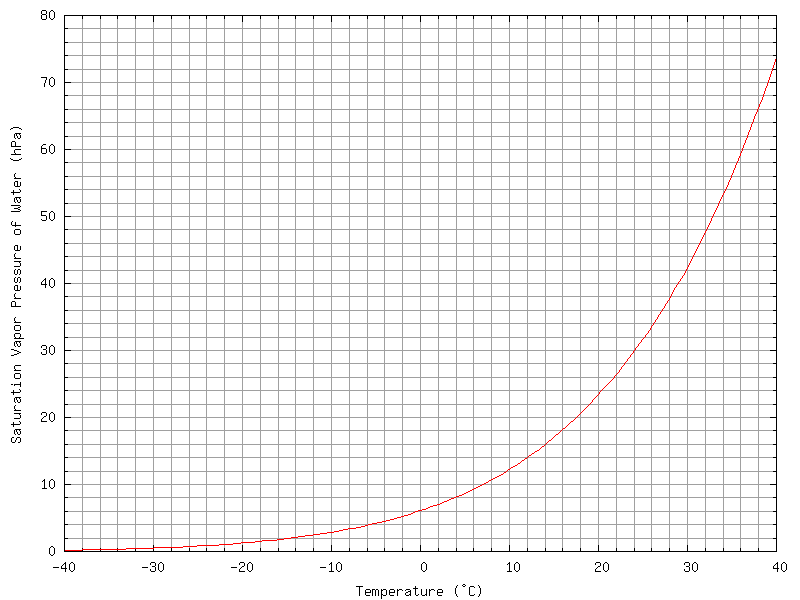Considerations About Humidity
Käännös: [ Google ]
Kategoriat: [ Tiede ]
 Relative humidity is the ratio of the current amount of water (vapor) in the
air over the maximum amount of water the air can hold (when the air is
saturated with water vapor). The latter value depends on the temperature of
the air: the warmer the air, the more water it can hold. The graph on the left
shows this value, called the saturation vapor pressure, and has ben drawn
based on the Goff-Gratch equation
Relative humidity is the ratio of the current amount of water (vapor) in the
air over the maximum amount of water the air can hold (when the air is
saturated with water vapor). The latter value depends on the temperature of
the air: the warmer the air, the more water it can hold. The graph on the left
shows this value, called the saturation vapor pressure, and has ben drawn
based on the Goff-Gratch equation
The temperature to which a given volume of air must be cooled down in order for the water it contains to reach the saturation vapor pressure is called dew point. When the dew point is below 15 °C, the atmosphere is comfortable. Between 15 °C and 20 °C it is uncomfortable, and above it is considered as oppressive. Moreover, a sane living atmosphere should have a relative humidity comprise between 30 and 50%. From this we can infer that limit comfortable conditions are e.g., 26 °C at 50% humidity, 30 °C at 40% humidity or 35 °C at 30% humidity.
Also, dry air feels cooler at room temperature. When relative humidity is ideal, temperatures in buildings can be lowered without causing discomfort to people in them.
Finally, when the relative humidity is low, one is more prone to electrostatic discharge, which is prevented in humid conditions because the surface layer of moisture on many objects conducts electric charges harmlessly to earth and prevents electrostatic charges to accumulate on the human body.
Humidex and Wet Bulb Globe Temperature Wet Bulg Globe TemperatureFormulas about dew point
[ Postattu 22. heinäkuuta 2006 klo 19.55 | ei kommenttia | kestävä linkki ]






